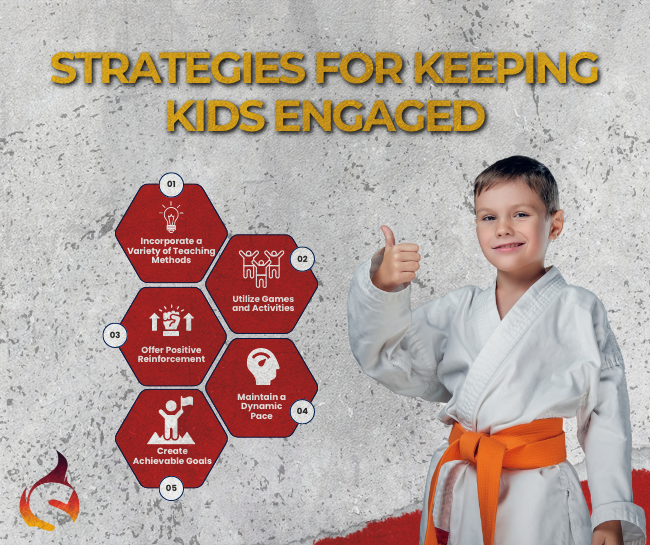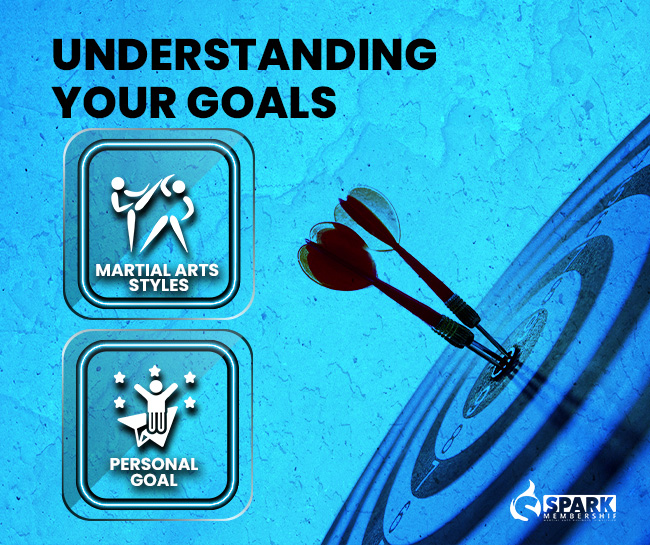
Understanding how to structure a martial arts class for kids is crucial in fostering an environment that not only teaches them valuable skills but also instills a lifelong love for martial arts. A structured class can significantly enhance learning, engagement, and retention, serving as the backbone of a thriving martial arts school. This guide offers strategic insights for instructors and school owners, emphasizing the importance of a tailored approach that meets the unique needs and learning styles of children.
Understanding Your Audience

Children are not mini-adults; they have distinct learning styles, attention spans, and developmental needs. It’s essential for martial arts instructors to recognize and adapt to these differences to ensure each class captures and sustains the children’s interest. Here’s how you can tailor your approach:
Learning Styles:
Kids absorb information in various ways. Most children benefit from a blend of:
- Visual (seeing and observing),
- Auditory (listening and speaking),
- Kinesthetic (touching and doing).
Understanding these learning styles can help you structure your class to engage every child.
Attention Spans:
Young learners have shorter attention spans. Therefore, it’s crucial to:
- Keep instructions clear and brief.
- Switch activities frequently to maintain engagement.
Physical and Mental Needs:
Children’s physical coordination and mental focus are in developmental stages. Instructors should:
- Introduce exercises that improve balance, coordination, and flexibility.
- Use games and activities that enhance focus and memory, making learning fun and effective.
💡 By crafting your martial arts classes with these considerations in mind, you ensure a supportive, engaging, and enriching environment for all young learners. This approach not only helps in keeping the kids interested and active throughout the session but also significantly enhances their learning experience and retention.
Essential Components of a Martial Arts Class for Kids

Creating an enriching martial arts class for children involves blending key elements that cater to their developmental stages, ensuring each session is both educational and engaging.
Warm-Up Activities
Warm-up activities should be fun and engaging, preparing the kids physically and mentally for the class. Incorporate movements that are foundational to martial arts to build muscle memory and coordination.
Core Teaching (Technical Skills, Drills)
The core teaching segment should introduce new techniques and reinforce existing ones through drills. Break down complex movements into smaller, manageable parts and use language that kids understand.
Games and Engagement Activities
Games are crucial for keeping the class enjoyable and lively. They should be designed to teach martial arts principles, such as balance, timing, and strategy, in a playful context.
Cool Down and Reflection
End the class with activities that allow the body to cool down and the mind to reflect on what was learned. This can include gentle stretching and open discussions about the day’s lessons.
Incorporating Educational Technology
Leverage martial arts membership software to streamline administrative tasks and enhance the learning experience. Such technology can facilitate scheduling, progress tracking, and communication with parents, making it easier to monitor each child’s development and engagement.
Strategies for Keeping Kids Engaged

To ensure martial arts classes are not just educational but also captivating for children, adopting diverse strategies is essential. Here’s how to keep young learners interested and motivated:
- Incorporate a Variety of Teaching Methods: Use stories, demonstrations, and hands-on practice to cater to different learning styles.
- Utilize Games and Activities: Design games that are fun and reinforce martial arts principles, such as balance and strategy.
- Offer Positive Reinforcement: Celebrate achievements and provide constructive feedback to foster confidence and continual improvement.
- Maintain a Dynamic Pace: Rotate activities to match children’s attention spans, keeping energy levels high and minds engaged.
- Create Achievable Goals: Set clear, attainable objectives for each class to give children a sense of progress and accomplishment.
Planning Your Class Structure

A well-planned class structure strikes a balance between consistency and variety, providing a sense of security while keeping the classes dynamic and interesting. Start with a basic framework, then adjust based on the day’s objectives and the kids’ responses.
Sample Class Structure:

- Warm-Up (10 minutes): Fun, dynamic activities to get the heart rate up.
- Core Teaching (20 minutes): Introduce one or two new techniques, with drills for practice.
- Games and Engagement Activities (15 minutes): Implement games that reinforce the day’s lessons.
- Cool Down and Reflection (5 minutes): Gentle stretching and a group discussion on what was learned.
Structuring a martial arts class for kids is both an art and a science. By understanding your audience, incorporating a variety of engaging components, and using technology wisely, you can create an environment that not only teaches martial arts but also fosters respect, discipline, and a love for learning. Remember, the goal is not just to produce great martial artists but to positively impact young lives. We encourage all instructors to innovate, experiment, and continually seek ways to enhance their teaching methods. For more insights and resources, consider signing up for a trial class or contacting our school for more information.
Discover the Key Indicators That You’re Running A Successful Martial Arts School. Read our insightful blog for valuable tips and strategies. Ready to revolutionize how you handle your martial arts school’s members? Give Spark Membership a shot today and discover the difference seamless integration can make! Elevate your school’s management, enhance member satisfaction, and unlock new levels of success. Don’t wait, start your transformation now!







